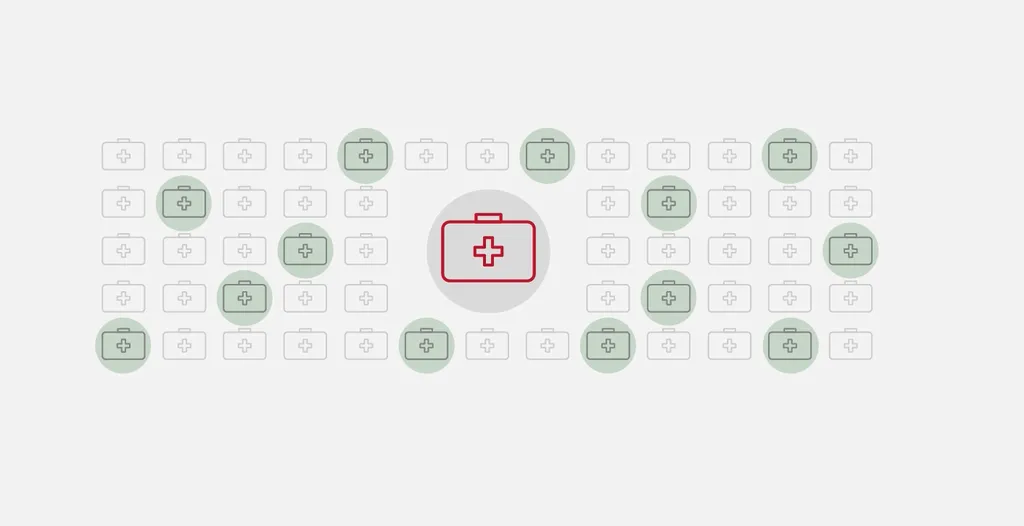Bank of America research shows that 71% of healthcare firms expect mergers and acquisitions (M&A) to increase in the coming year, driven by the need for scale and cost reduction.
M&A has long been used by pharmaceutical firms to manage the research and development life-cycle; by insurance firms to bend the cost curve; and by healthcare providers to scale into new markets.
This time it’s different. Technologies are transforming medical research and, along with consumerism of healthcare, are opening up more cost-effective services.
Spurred in part by the pandemic, this wave of healthcare restructuring is pushing innovative new business models that will shape the industry of the future. With a quicker pace, more firms are looking beyond straight-forward vertical expansion to mergers and acquisitions across industries and ecosystems.
A prime example is a multinational technology company’s recent expansion into healthcare with the acquisition of a virtual and physical healthcare provider. Yet, with cultures and operations so diverse the dynamics of integration change significantly.
Innovation and technology-focused partnerships and joint ventures are also booming. Most notable are the partnerships between multinational pharmaceutical and biotechnology companies along with leading universities, combining niche research with production and distribution scale for Covid-19 vaccines.
The scope of these partnerships is broad. A US health insurance company has partnered with a digital primary healthcare provider to leverage AI technologies. A healthcare and insurance company has partnered with an Australian health insurance provider to create a data science centered health services offering.
The need to excel at core functions and invest in technology increases as healthcare providers assess future technology-focused business models. This also drives divestment and spin-offs, like a global biopharma company’s spin-off this year of their consumer healthcare business, or a multinational healthcare company’s planned splitting of consumer products business from pharmaceutical and device operations.
A new wave of change will require a new set of skills and a new approach from treasurers. With aims that are operational and technology-focused, the impacts and expectations on treasury will go well beyond deal financing. To be ready for such high levels of transformation will require more planning, deep operational insights and digital skills.
Operational planning now will reap dividends later
The first priority for most treasurers in M&A transactions is determining the structure of the deal, how it will affect cash flow, and how it will be financed. Although debt structuring is often priority number one, treasury’s role is of course broader. This includes leading tax and regulation planning, and coordinating banks, consultants, and rating agencies. Under time pressure the tendency is to focus on closing the deal, but in an increasingly technology-focused industry it is the operational functioning and integration that adds long-term value.
The challenge is that treasurers are often more comfortable sourcing a billion dollars than understanding how that billion dollars will impact downstream processes and systems. To achieve their aims treasurers must influence and collaborate widely across the organization, with partners in procurement, accounts payable and receivable, or patient accounting.
The challenge is that treasurers are often more comfortable sourcing a billion dollars than understanding how that billion dollars will impact downstream processes and systems. To achieve their aims treasurers must influence and collaborate widely across the organization, with partners in procurement, accounts payable and receivable, or patient accounting. In M&A transactions the level of operational detail, collaboration and timing are critical, so these elements need to be worked out long before the deal closes.
Fortunately, the basic steps for M&A treasury operational planning are the same for any new digital treasury transformation project. It starts with a robust understanding of technology platforms, overlaid by workflow mapping that sheds light on data-flow-roadblocks, and forms the basis of a roadmap to a future state. With this preemptive analysis done, treasury has the tools and visibility to evaluate system integration options, ensure a smooth day one, develop policies, and exploit opportunities to create best-in-class capabilities.
Treasury operations readiness checklist:
Assess cash visibility and forecasting effectiveness
Audit working capital processes, payment terms and master data
Assess the level of control and centralisation of payments across the organisation
Create a data strategy that documents core data and gaps in risk management data
Document system architecture and best practice end-state
Undertake detailed workflow mapping to identify bottlenecks and overlay with system architecture and data-flows
Review approvals and controls and ensure they are at the correct workflow points
Assess data and communication capabilities to
Avoid the divestment ball and chain
On the flip side of M&A transactions is a carve-out or divestment where the basic treasury challenges are similar. For firms divesting or spinning off, carving out systems or workflows with different levels of understanding can lead to delays and errors. Only a detailed technology and system awareness will enable the new entity to quickly connect to a fresh set of bank accounts and adjust to new policies and business processes. The same preemptive planning will demonstrate the right level of knowledge to give confidence to prospective buyers, create a path for separation, and facilitate opportunities to revitalize or re-envision the treasury operating models, systems and workflows.
A fundamental roadblock is often a lack of granular data to be able to rapidly redefine changing deal dynamics and reporting needs. Companies see this lack of visibility as the single largest challenge in divestment, with more than a third of firms (36%) only having access to data at a business unit level.
Robust systems and data-flow mapping will highlight these gaps and enable planning for data segregation, and continuity for data-rich healthcare environments and critical functions like regulatory records.
For the new entity comes the challenge of adapting to a fresh environment. The divesting firm likely knows who is involved and how each process works, but the new company finds itself in a different position. These entities are often smaller and will have a new credit rating. Engagement with banking partners is necessary to understand how these changes impact their access to different funding and financial services, which they may have taken for granted in the past.
Even more crucial is managing the reliance on old infrastructure. A transition services agreement (TSA) will outline how the selling entity will continue to provide services to the sold or spun-off entity, from common IT systems to shared procurement services. These agreements can run for many years.
For the new entity, a new environment and set of expectations will require flexibility and adaptation. Only detailed planning, with full system and process awareness, will ensure the legacy shared infrastructure does not become a ball and chain that limits innovation and the use of new technologies.
Readiness through technology and workflow awareness
The healthcare industry, like many industries, is being transformed by technology. For healthcare, mergers, acquisitions, joint ventures, divestments and spin-offs will play a significant role in reshaping business models. This means transformation on a large scale.
Many treasurers may only deal with M&A once or twice in a career, and it is a defining and challenging task. Be prepared through early planning and detailed system and workflow documentation and awareness. It is an investment now to be on the front foot in a time-critical environment.





